Lost In Space Season 2 Review
This set up actually feels a bit more akin to the original 1965 Lost in Space than season one of this latest reimagining.
This article is more than 2 years old
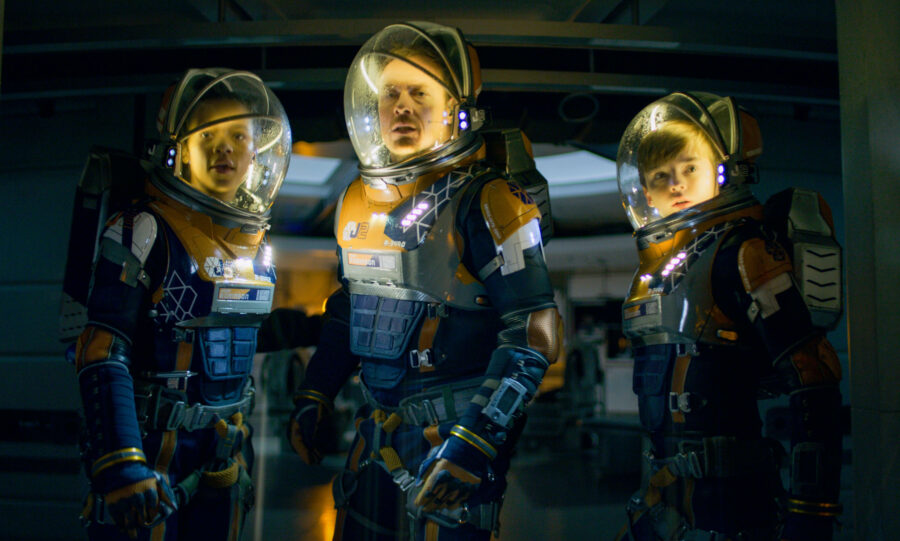
Over the course of the ten new episodes, what begins as a relatively contained narrative—the Robinsons stranded on their beach planet—grows and evolves. Eventually, their circumstances and environment change, and the crew of the Resolute comes back into the picture. Though the filmmakers broaden the horizons, it doesn’t always benefit the series. This is a full review of all ten episodes in Lost in Space season 2 on Netflix.
The first two episodes, “Shipwrecked” and “Precipice,” work well because they present the Robinsons—and by extension Don and Smith—as a whole. Despite internal frictions and conflicts, they’re more or less a cohesive unit. They have to be, they have to work together and cooperate to survive and try to escape.
As season two progresses, Lost in Space breaks this unit apart and sends each on their own side quests and storylines. Not only does this scatter the main narrative, and lose much of the emotional thrust and the charm the family dynamic provides, when they’re alone, we see how thin the characters truly are.
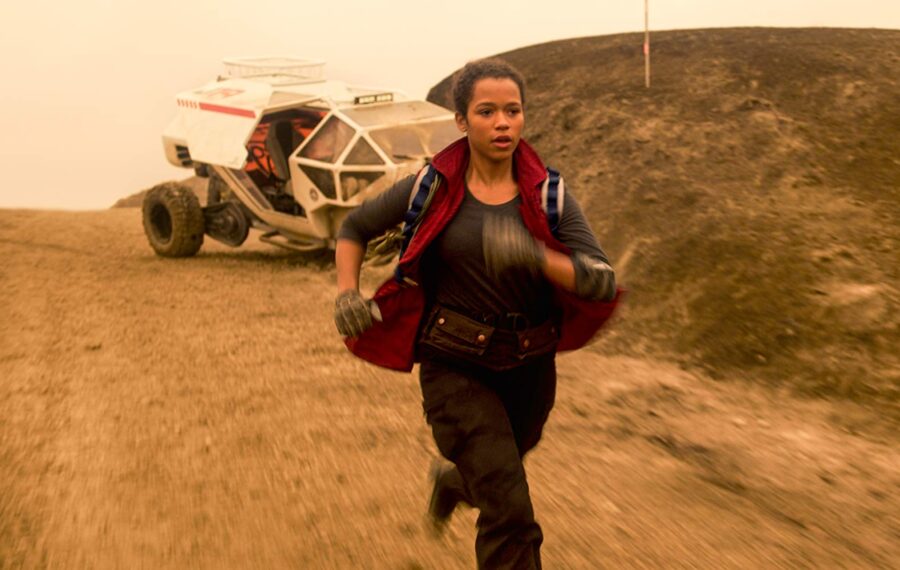
Like John says in episode one, maybe it’s better when they’re all together. The core players are pretty one-note. Without much depth or complexity, they rely heavily on their broad primary character traits—Will is smart and misses his Robot, Penny feels overlooked and desperate to belong, John is heroic, and so on. It’s all very cut and dry, black and white, without much space for moral grey zones. They’re sweet and ideal and earnest and well-meaning, to the point where even their manufactured flaws are somehow too perfect—Maureen is stubborn and hard-headed, but only because she’s smarter than everyone else and always right.
When the family has each other to bounce off of, this homogenized faultlessness can work. However, when juxtaposed against other characters, they play flat and predictable—the Robinsons will always be doing the right thing for the right reasons, even when it’s difficult and no one else sees that. Episode by episode, it’s fine, even delivering a few genuine moments of warmth and emotion—the comprehensive exploration of the John/Judy relationship in “Run,” episode five, may be the high point. But it becomes a glaring distraction when looking at the season as a whole.
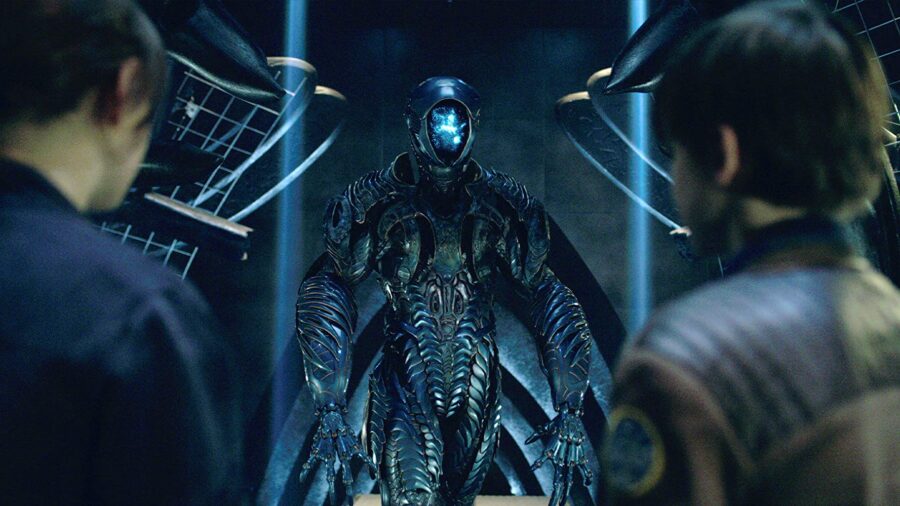
Parker Posey’s Doctor Smith continues to stand out as the sole character who’s more than a virtuous cardboard cutout. She’s diabolical and manipulative, but she also shows a sincere kindness with Penny—their relationship mirrors that of Will and his Robot. Though she’s always out for number one, at times she makes decisions that serve the greater good, even if it puts herself at risk. Through flashbacks, we learn more about her history and what drives her, and Posey nails the nuance and balance, all while having a total blast.
The biggest selling point of Lost in Space is the action, buoyed by strong special effects for a small-screen endeavor. Whether it’s sailing a makeshift craft through a stormy sea, running from alien creatures, or diving a spaceship directly into the heart of a gas giant, it consistently provides grandiose, soaring adventure. But this is yet another element that, while individual scenes play out as thrilling, taken as a whole, they become repetitive and formulaic. Watch a few episodes back to back and it doesn’t take long before it’s all very familiar.
“Despite flaws and a general paint-by-numbers approach, with season two, Lost in Space serves up a solid dose of fun, exciting space action.”
– Brent McKnight, Giant Freakin Robot’s Lost In Space Season 2 Review
Situations escalate in a predictable fashion. If you have a mission, put a ticking clock on it; if the harsh natural environment of space isn’t tough enough, add a creature; if someone appears to be on your side, maybe think again. Of course, when the kids climb into a trash compactor, it’s going to start compacting at the most inopportune time. In the moment these tactics escalate the tension and pressure, but ultimately it becomes expected and loses effectiveness, a case of diminishing returns. It often feels like there’s a mandate in the writers’ room where at a certain point in every scene they have to insert an additional complication.
Despite flaws and a general paint-by-numbers approach, with season two, Lost in Space serves up a solid dose of fun, exciting space action. Sure, there’s not a ton to emotionally invest in, the characters are shallow, and it’s unlikely to have audiences feverishly clamoring for more ASAP, but it offers an entertaining enough escapist sci-fi romp. Sometimes that’s exactly what you want.

Lost In Space Season 2: An In-Depth Review Of Episode One
Season two of Lost in Space builds on the groundwork laid in “Shipwrecked,” expanding on the story, finding new and precarious positions in which to place the Robinsons. While often adventurous and thrilling, full of action to enjoy and mysteries to unravel, it’s also a mixed bag.
Just when you thought Will Robinson might finally be out of danger, Netflix’s Lost in Space returns for season two. Okay, you never thought that, did you? It wouldn’t be a particularly exciting series if that was the case. It’s also readily apparent because now they’re in the place the Robot called “Danger.” If that’s not foreboding, what is? This is a review of Lost in Space Season 2’s first episode.
Season two of the revamped Lost in Space picks up with “Shipwrecked.” Set seven months after the Jupiter catapulted into a different solar system, we find the Robinson family—Maureen (Molly Parker), John (Toby Stephens), Will (Maxwell Jenkins), Judy (Taylor Russell), and Penny (Mina Sundwall)—as well as Don West (Ignacio Serricchio) and June Harris/Dr. Smith (Parker Posey), stranded on an isolated strip of land on a tumultuous ocean planet trying to fix their ship.
This set up actually feels a bit more akin to the original 1965 Lost in Space than season one of this latest reimagining. We find the core group, and just the core group, alone in a strange place doing their best Swiss-Family-Robinson-in-space impression. They’re alone, the sole focus and their main goals are survival and escape.
Since “Shipwrecked” is the first episode of season two, there’s quite a bit of table setting. The first portion focuses primarily on the characters, their daily lives, and the various conflicting thoughts and desires. Maureen works to get them off this rock, while John kind of likes that it’s just them, that they can be a family again.
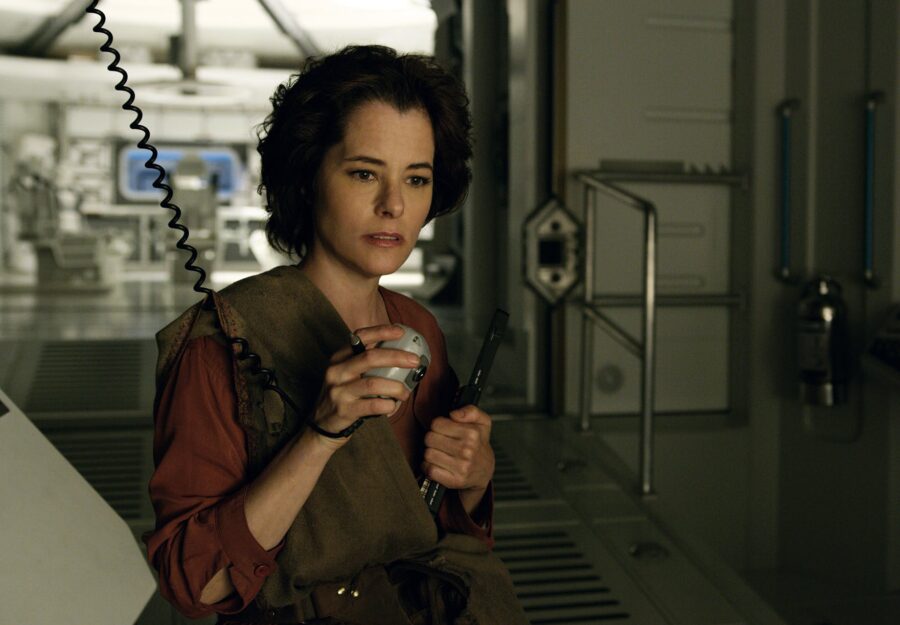
Smith, now a captive, has her own schemes in the works and Posey clearly has a blast playing her snarky, vaguely unhinged character. Penny and Judy bicker like sisters do. Will can’t help but miss his friend Robot and vows to track him down once they’re airborne. And Don, you know, basically cracks jokes, looks handsome, and moves things when muscles are needed.
Though they try to create a sense of normalcy—they even stage a family Christmas—they, and by extension we, know it can’t and won’t last. Before too long, circumstances conspire to push them to leave, even if their plan is bonkers and half-baked, whether they’re ready or not. Still, it’s the dynamics and chemistry between the cast that sells the series, and even though action drives the back half of the episode, this grounds their adventures and provides emotional connection and stakes.
Perhaps what Lost in Space does best is deliver big, sweeping action. “Shipwrecked” doesn’t spend all that much time in space, but it maintains an epic scope and scale. Everything takes on an air of grandeur and ambitious space opera style adventure, even when settled on the ground or sea. There’s a sense of wonder, awe, and fun, like an old sci-fi serial, as the family must come together and enemies become unlikely, if uneasy, allies.
Solid special effects go a long way toward selling the scenario and action here. Trading the depths of space for a black-sand beach, the digital and model work grounds the episode in both a literal and figurative sense. The set design of the ship’s interior blends hyper-modern and high-tech with a cool retro-futuristic throwback aesthetic that’s a nice nod to its 1960s origins. Most importantly, perhaps, the surroundings feel lived in and used like these people have been stuck here for seven months. The living quarters don’t look fresh out of the box and their attempts to grow food appear cobbled together and makeshift, using what they have on hand. Overall there’s a well-thought-out and well executed attention to detail in Lost in Space season 2.
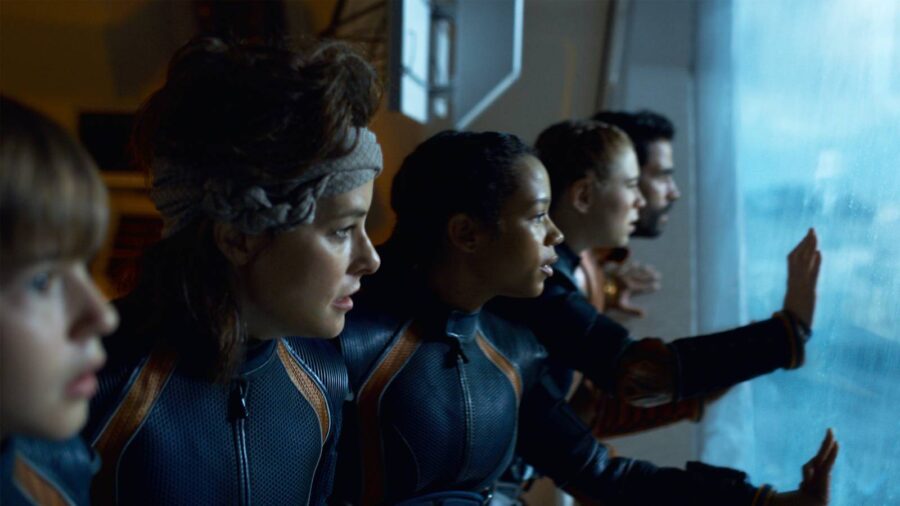
Though there’s a bit of a different spin and construction this time around, “Shipwrecked” should satisfy fans of Lost in Space season one. What you need to know from this Lost in Space Season 2 review is that even though it’s a bit of a new scenario, but the vibe remains familiar. The action is quick and electric, ending on a cliffhanger that practically begs you to watch episode two, and the first installment definitely sets the stage for more thrills and adventures to come.












